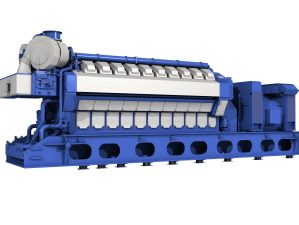The contract was awarded in June, and the power station, delivered on a turn-key basis, is expected to be commissioned by April 2017.
“Wärtsilä engines have very high simple cycle efficiency. They are ideal for peaking power because they are capable of quick starts and stops. They provide the operational flexibility we need”, says Susan Jacob, Chief Engineer at KSEBL. Kerala has a peak power deficit of approximately 300 MW.
This is the first dedicated peaking power station ordered by a state utility in India. It will also be KSEBL’s first gas-fired power plant. The plant will start and stop twice every day and run at full capacity for two 4 to 5 hour periods, covering the morning and evening peaks in electricity demand.
The plant will comprise four Wärtsilä 34SG engines running on natural gas. The gas will be transported by a pipeline from the new LNG terminal in Kochi. The engines will replace two aged generation units that run on low sulphur heavy stock oil (LSHS). Switching from LSHS to natural gas will reduce the CO2-emissions by approximately 25 percent.
Wärtsilä’s installed power generation base in India is approximately 4000 MW. Globally the installed capacity is 58 GW in 175 countries.
25 Декабря 2025 | четверг | 10:38


